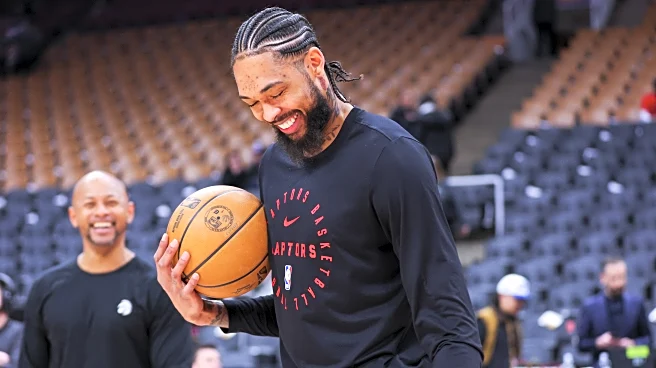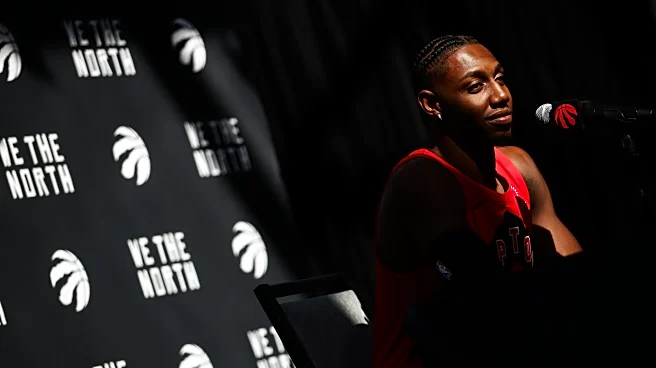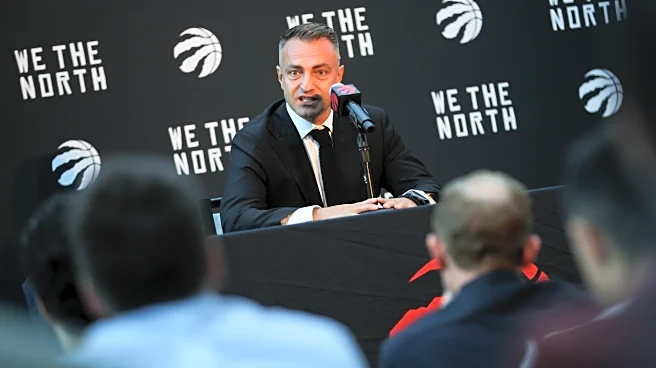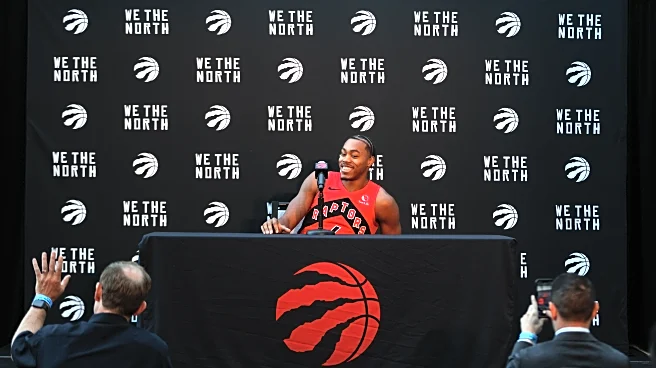What's Happening?
The Toronto Raptors are entering the 2025-26 NBA season with significant questions surrounding their strategy and performance. After finishing the previous season with a 30-52 record, the team has made several roster changes, including the addition of Collin Murray-Boyles and Sandro Mamukelashvili, while losing Chris Boucher. Despite these moves, the Raptors remain stuck in the middle of the NBA standings, unable to break into the upper echelon of teams. The team has invested heavily in players like RJ Barrett, Immanuel Quickley, Scottie Barnes, and Jakob Poeltl, yet their combined efforts have not translated into significant success. The acquisition of Brandon Ingram, despite his injury history, has not propelled the team closer to championship contention, raising concerns about the team's direction and strategy.
Why It's Important?
The Raptors' current situation highlights the challenges faced by NBA teams that are unable to fully commit to either rebuilding or contending for a championship. With one of the league's highest payrolls, the Raptors are under pressure to justify their financial investments in players who have yet to deliver substantial results. This mediocrity could impact the team's ability to attract top talent and maintain fan engagement. The team's performance also has implications for the Eastern Conference dynamics, as the Raptors' inability to rise above the middle tier affects playoff competition and overall league balance.
What's Next?
The Raptors are set to open their season on October 22 against the Atlanta Hawks. Head coach Darko Rajaković faces the challenge of motivating his team to exceed expectations and avoid being stuck in the NBA's middle ground. The development of key players like Scottie Barnes and the health of Brandon Ingram will be crucial in determining the team's trajectory. The Raptors must also consider potential trades or strategic shifts to enhance their competitiveness and avoid long-term stagnation.
Beyond the Headlines
The Raptors' predicament raises broader questions about team management and the effectiveness of high payrolls in achieving success. The team's struggle to find a clear path forward reflects the complexities of balancing talent acquisition with financial constraints. Additionally, the Raptors' situation underscores the importance of player development and strategic foresight in building a sustainable and competitive team.












